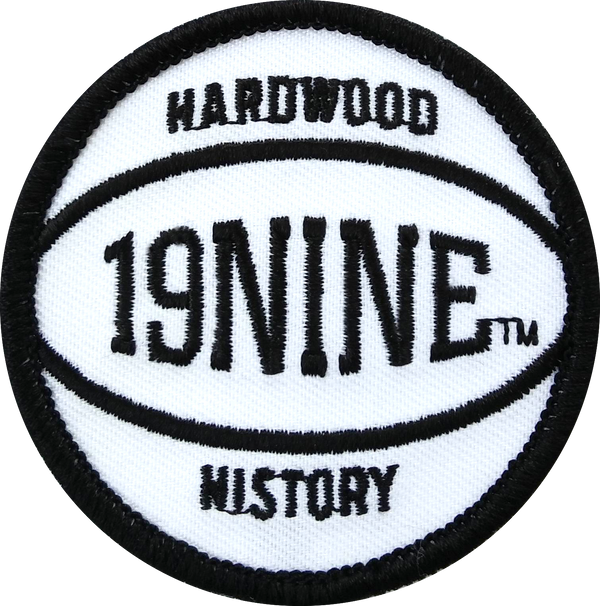When Ray Meyer was appointed DePaul University's head basketball coach in the spring of 1942, the Chicago-based Catholic school had enjoyed a solid run as a basketball independent in the earliest days of the college game.
In the school’s first 19 seasons of hardwood competition, the Blue Demons – originally called the D-men for the oversized letter D emblazoned on their athletic uniforms – compiled a record of 225-111. Still, DePaul basketball wasn’t much more than a regional sideshow in an evolving collegiate sport clamoring for attention. In fact, the squad played its games in a former theater called The Barn.
Forty-two seasons and 724 victories later, Meyer had transformed the once-sleepy school under Chicago’s “L” tracks into a national brand and helped DePaul grow into the nation’s largest Catholic university. Meyer, the youngest of 10 children and son of a candy wholesaler, guided his Blue Demons to a pair of Final Fours and numerous #1 rankings, doing it all with a mix of Chicago grit and Midwestern humility that was as energizing and endearing as it was entertaining.
The native son thrives in his hometown
Before taking the reins at DePaul, Meyer knew a bit about winning basketball. As a high school junior, Meyer led Chicago’s Saint Patrick Academy to the 1932 Catholic high school national title. He then starred at the University of Notre Dame, serving as the Irish co-captain during his junior and senior seasons.
Though Meyer had once contemplated a career in the priesthood, he entered the coaching ranks as an assistant at Notre Dame under legendary coach George Keogan. When DePaul offered Meyer the head job and a chance to return to his hometown in April 1942, enticing him with a three-year contract, Meyer insisted on a one-year, $2,500 contract because he didn’t know if he would like the job.
In Meyer’s first season at the helm, he turned a gangly, nearsighted Chicago-bred player named George Mikan, a 6-10 string bean who had never even played high school basketball, into a dominant force. Together, Meyer and Mikan propelled DePaul to the NCAA Final Four. (Mikan, for his part, went on to become one of the most influential figures in early NBA history.)
As it turns out, Meyer liked the job and DePaul liked him. Over a 42-year marriage, Meyer notched 37 winning seasons and DePaul thrived under his command. He shunned overtures from the pros and other college programs, including his alma mater Notre Dame, and remained committed to building one of the nation’s top programs at DePaul.
Knowing the Chicago area was rich in basketball talent, Meyer recruited heavily from the local prep ranks. In fact, he didn’t make his first out-of-state recruiting trip until he was 69 years old. His biggest stars included Chicago area hoopers like Mark Aguirre, Terry Cummings, and Dave Corzine, all of whom enjoyed lengthy NBA careers. His annual Ray Meyer Basketball Camp in northwestern Wisconsin each summer became a must for Chicago area kids dreaming of basketball glory.
Building DePaul into a national brand
In February 1979, Meyer was elected to the Basketball Hall of Fame. The following month, he scored perhaps his greatest coaching triumph outside of Mikan’s development when his Blue Demons defeated mighty UCLA and secured a spot in the historic 1979 Final Four. Though DePaul would lose a 76-74 heartbreaker to Larry Bird-led Indiana State in the semifinals, Meyer, the national coach of the year, found valuable perspective in DePaul’s historic run.
“We’re not crying,” he said after the Final Four loss. “We had a great year. Our heads are high.”
With DePaul basketball at its apex, the program traded its modest on-campus digs at Alumni Hall for the Rosemont Horizon, a sprawling new 18,500-seat arena just beyond the city limits. On Dec. 1, 1980, DePaul’s inaugural game at the new suburban arena, the Blue Demons downed Gonzaga and John Stockton 74-56.
Time and again, blue-clad fans packed the Rosemont Horizon and Chicagoans rallied around the Blue Demons. In the days before Michael Jordan and the Bulls ruled Chicago basketball, it was DePaul and Meyer who represented the city’s hoops scene. Games broadcast on the WGN-TV superstation before the advent of cable television, meanwhile, only intensified interest in DePaul and spread its name further across the country.
Leaving a lofty legacy
When Meyer announced he would retire following the 1983-1984 season, an eventual 27-3 campaign in which the Blue Demons were a top 10 mainstay, Meyer flashed a grin and assessed his career.
“Go back as far as you want and you’ll find that no player has gone downhill at DePaul,” Meyer said. “We have developed all of them, some from scratch.”
Meyer then handed the program’s reigns over to his son, Joey, who guided the Blue Demons for the next 13 seasons. Coach Ray, meanwhile, served as a goodwill ambassador for the university in addition to providing color commentary on radio for DePaul games.
When Meyer passed on March 17, 2006, at the age of 92, basketball luminaries like Digger Phelps, Larry Brown, and Isiah Thomas joined thousands more in Chicago to pay their respects to “Coach Ray.” The Chicago Tribune devoted pages to recapping his legendary career and his broad impact. Even if Meyer only considered himself an “employee” of the university, others knew he was so much more.
“There was a time when almost nobody outside Chicago knew the little school under the ‘L.’ One person introduced DePaul – no, not DePauw – University to the rest of the nation. That was Ray Meyer,” the Tribune opined. “He built a college basketball power in a pro football town. He was Chicago basketball when Michael Jordan was in diapers. … He was a warm-hearted, big- faced, gap-toothed bear, and you had to love him even when his teams trounced yours. He was coach. His city, his school, his fans will miss him.”

